At the Jameel House of Traditional Arts in Cairo, we immerse ourselves in the rich heritage of traditional arts, challenging ourselves to create original designs using timeless techniques. Since its inception in 2009, this collaborative programme between the Egyptian Ministry of Culture, The Prince’s Foundation School of Traditional Arts and Community Jameel has trained over 200 artists and artisans. Many graduates are now building their own businesses, contributing to Egypt’s evolving art scene.
We continually enhance our curriculum, introducing intricate geometric and floral patterns, new craft techniques and a stronger focus on design. This year, students embraced exciting challenges, such as the cuerda seca technique in ceramics, and created impressive projects, like Hany El Deeb’s curvilinear wood panel and Mariam Anwar’s tempera painting. New materials, like stone, were also explored, with Aya Soliman’s stone bench being a standout achievement.
Our programme fosters creativity and craftsmanship, and we look forward to welcoming new students into this inspiring journey, hoping to further enrich Egypt’s artistic legacy.
Mamdouh Sakr
Programme Manager
The Jameel House of Traditional Arts in Cairo
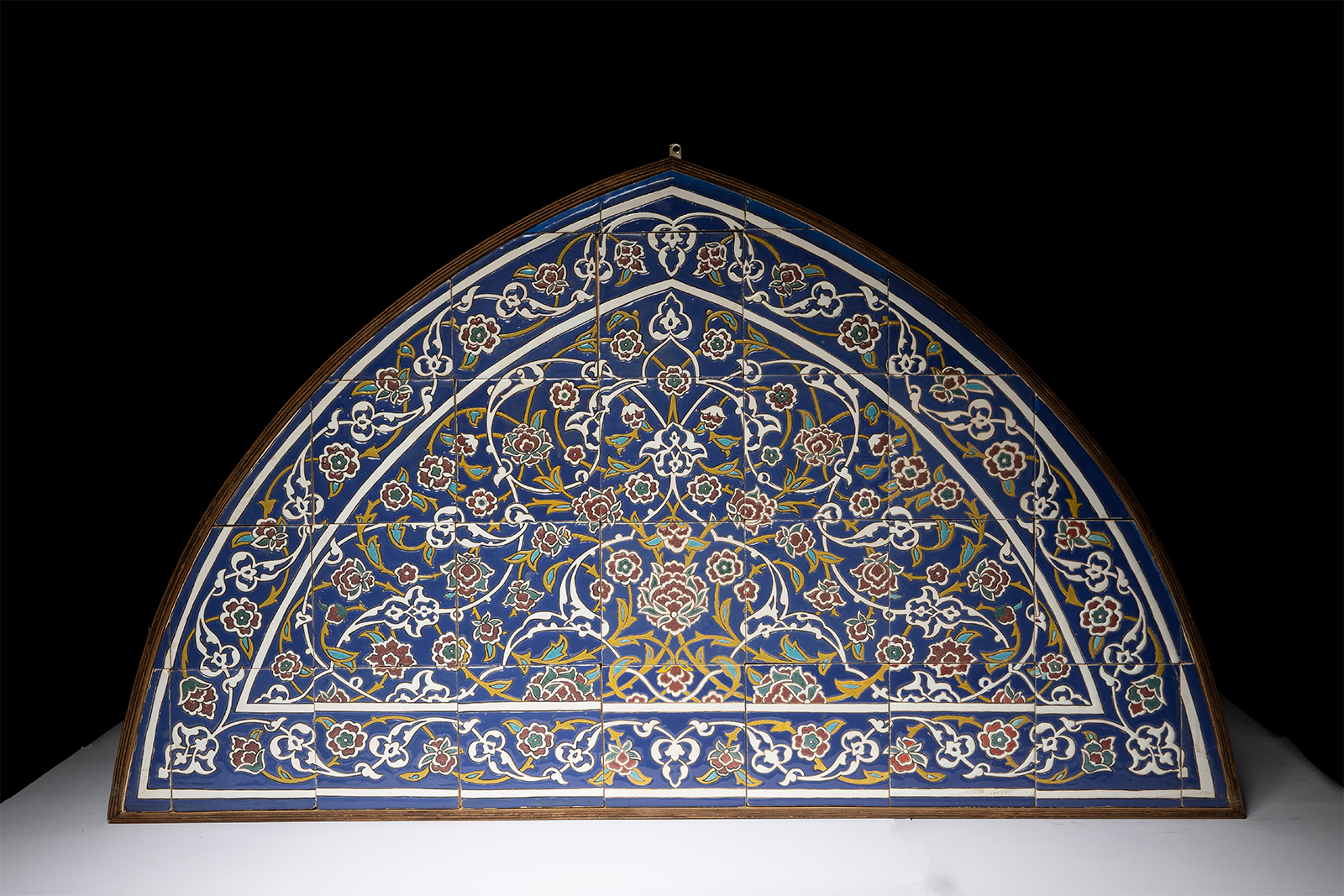
Panel
120 x 70 cm
This window façade decoration is inspired by Istanbul’s Süleymaniye Mosque, the city’s second oldest royal mosque. Thecuerda seca or dry rope technique was employed in this project, where glazes are separated using an isolating line composed of oil, manganese and a transparent substance. Drawing with the isolating line prevents the glazes from mixing, and six primary colours were used: red, blue, green, ochre, turquoise and white.
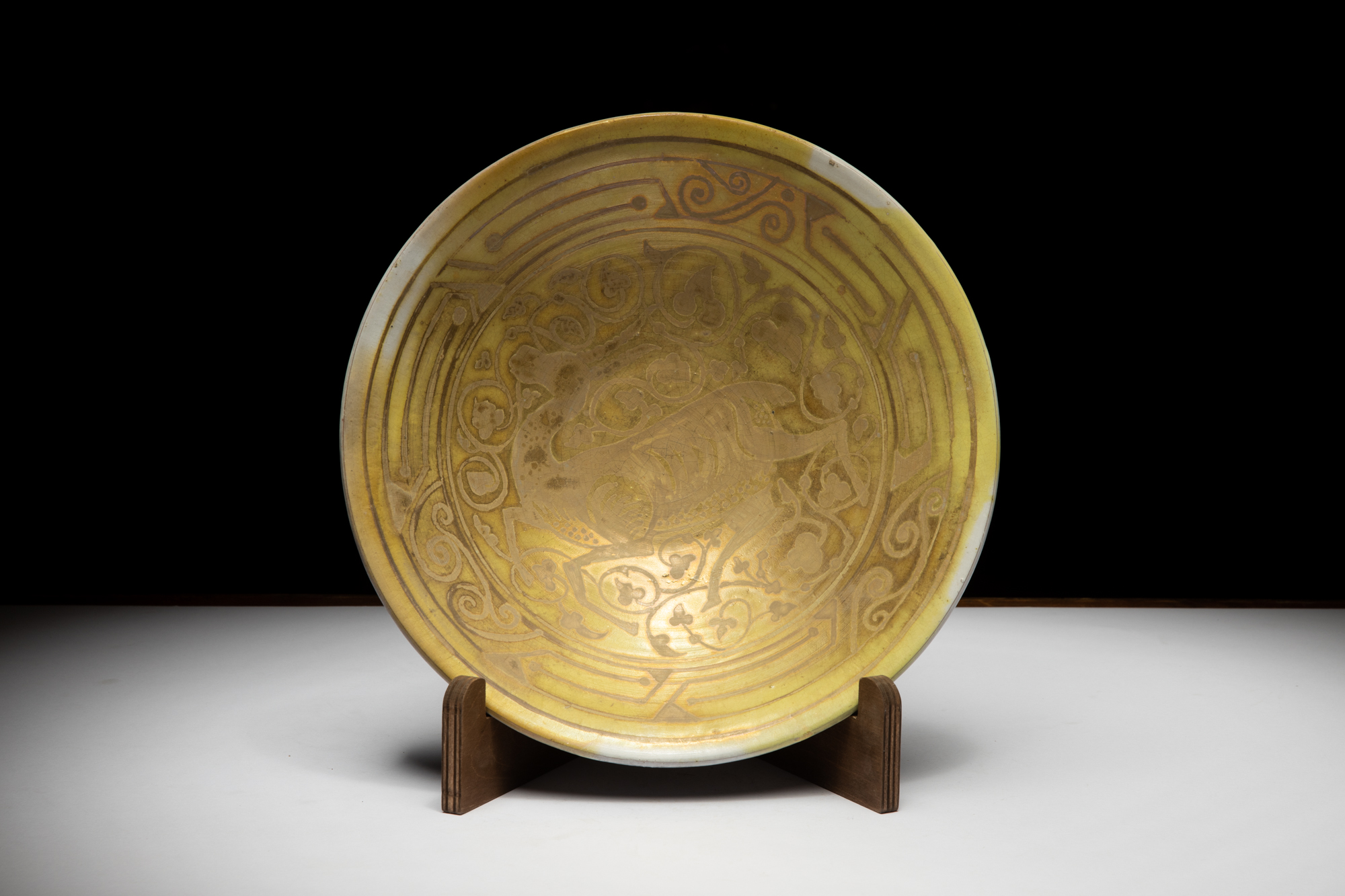
Plate
Featuring a gazelle surrounded by botanical motifs, this design was created using the metallic lustre technique that relies on the density of smoke during the firing process.
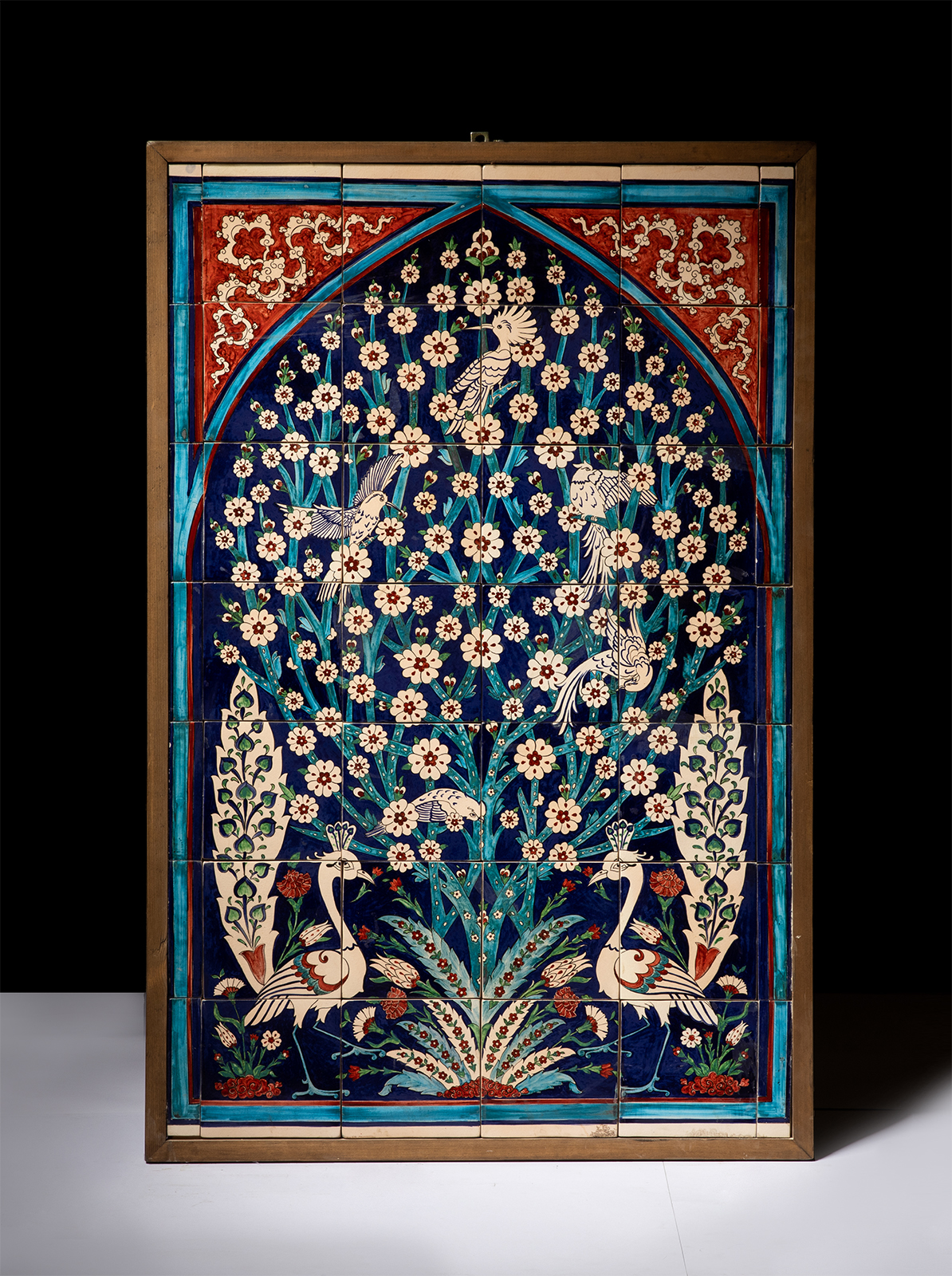
Tree of Life
105 x 67.5 cm
Crafted from 28 hand-painted tiles using oxides and underglaze technique, this panel is inspired by the tree of life story. Drawing from traditional Islamic motifs, it showcases bulut rumi, stylised flowers and animals as seen in the Topkapı Palace.
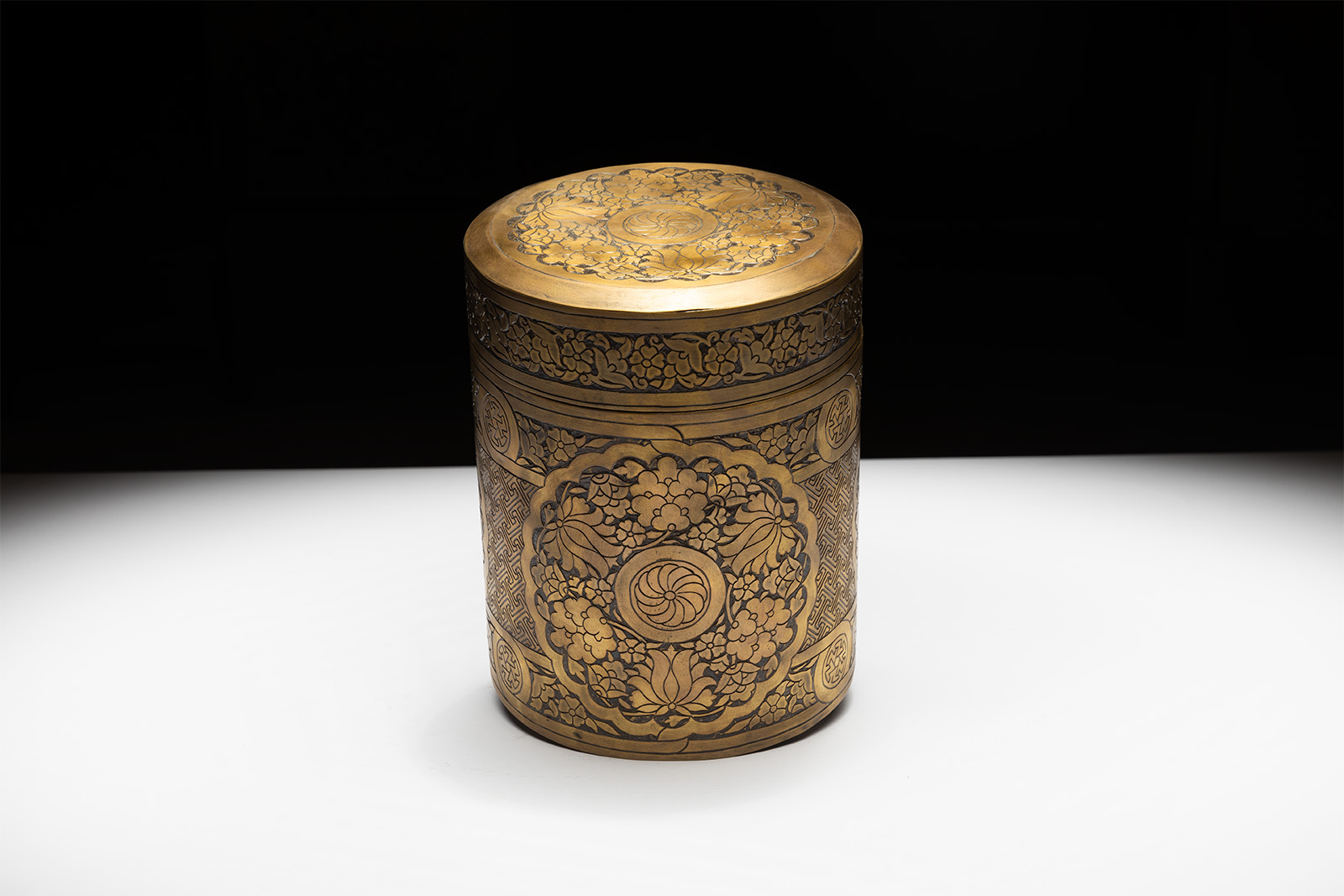
Brass Box
16 x 21 cm
Inspired by Mamluk-era food storage systems, this brass box features pen engravings used to create a hexagonal grid to distribute plant elements and combine quadrilateral geometric decorations.
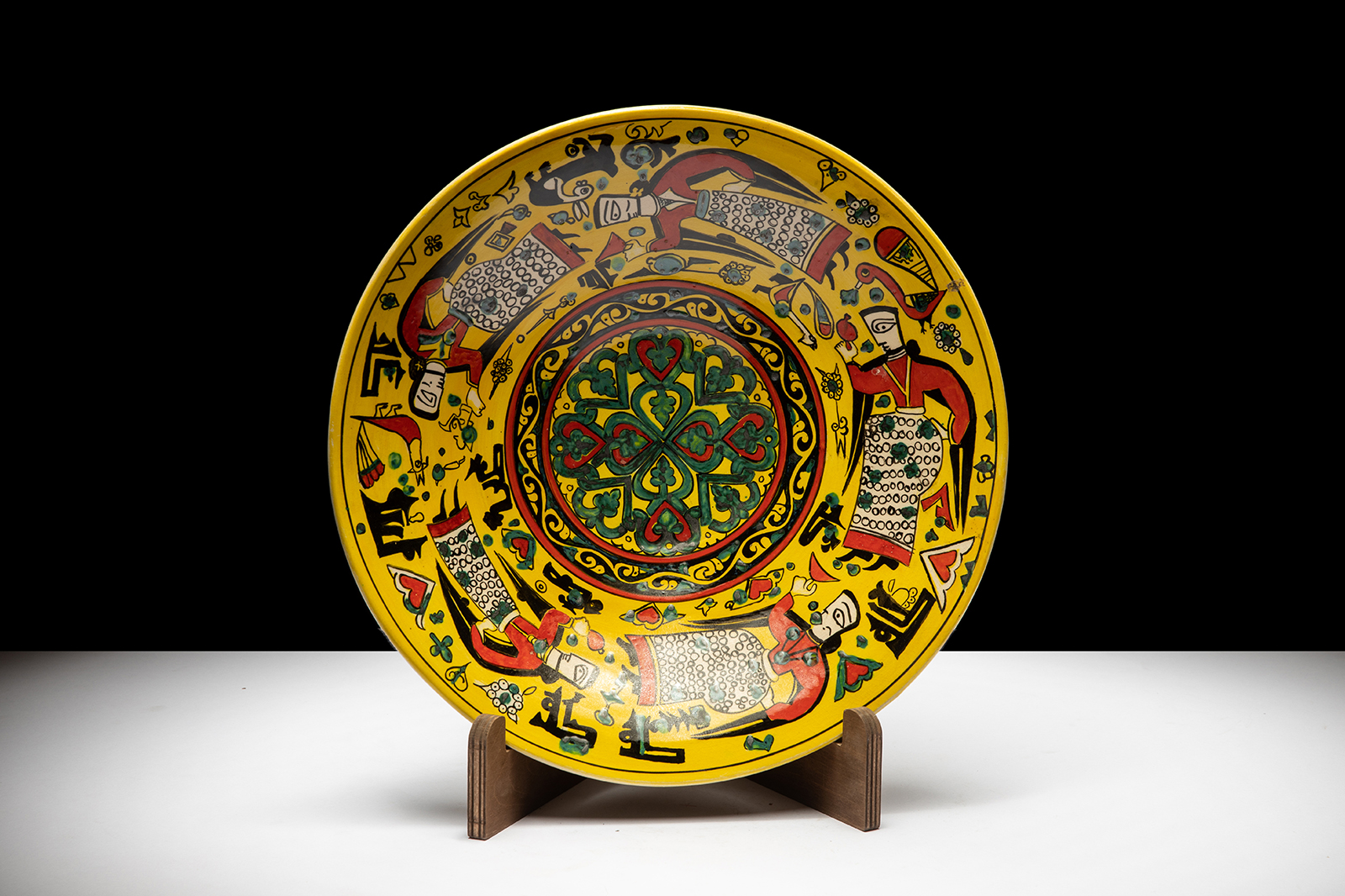
Plate
35 cm
Inspired by 10th-century Persian crafts, this ceramic has black, yellow, red and green colours under a clear glaze. It is decorated with delicate drawings containing birds, animals, floral and plant decorations and Kufic letters, with black, yellow, red and green colours under a clear glaze.
The drawings reflect the region of Nishapur and the range of festivals celebrated by Muslims and Zoroastrians, and also depict Christian symbols, giving it a character full of life and different stories.

Panel
Inspired by the Bibi Khanum Mosque dating to 1398 and 1405 in Samarkand, the design of this panel incorporates plain tiles alongside tiles adorned with botanical motifs. The fundamental structure is based on the ten-pointed star polygon, five-pointed star polygon, eight-pointed star polygon and the relations between them. Clay slabs were crafted and manually cut, then left to dry before undergoing the initial firing process. Then, plain tiles were sprayed with a colour resembling natural beige rock hues. For the tiles with botanical motifs, the cuerda seca technique was employed to separate different glaze colours. Finally, a second and final firing took place, followed by assembling to achieve the final form.
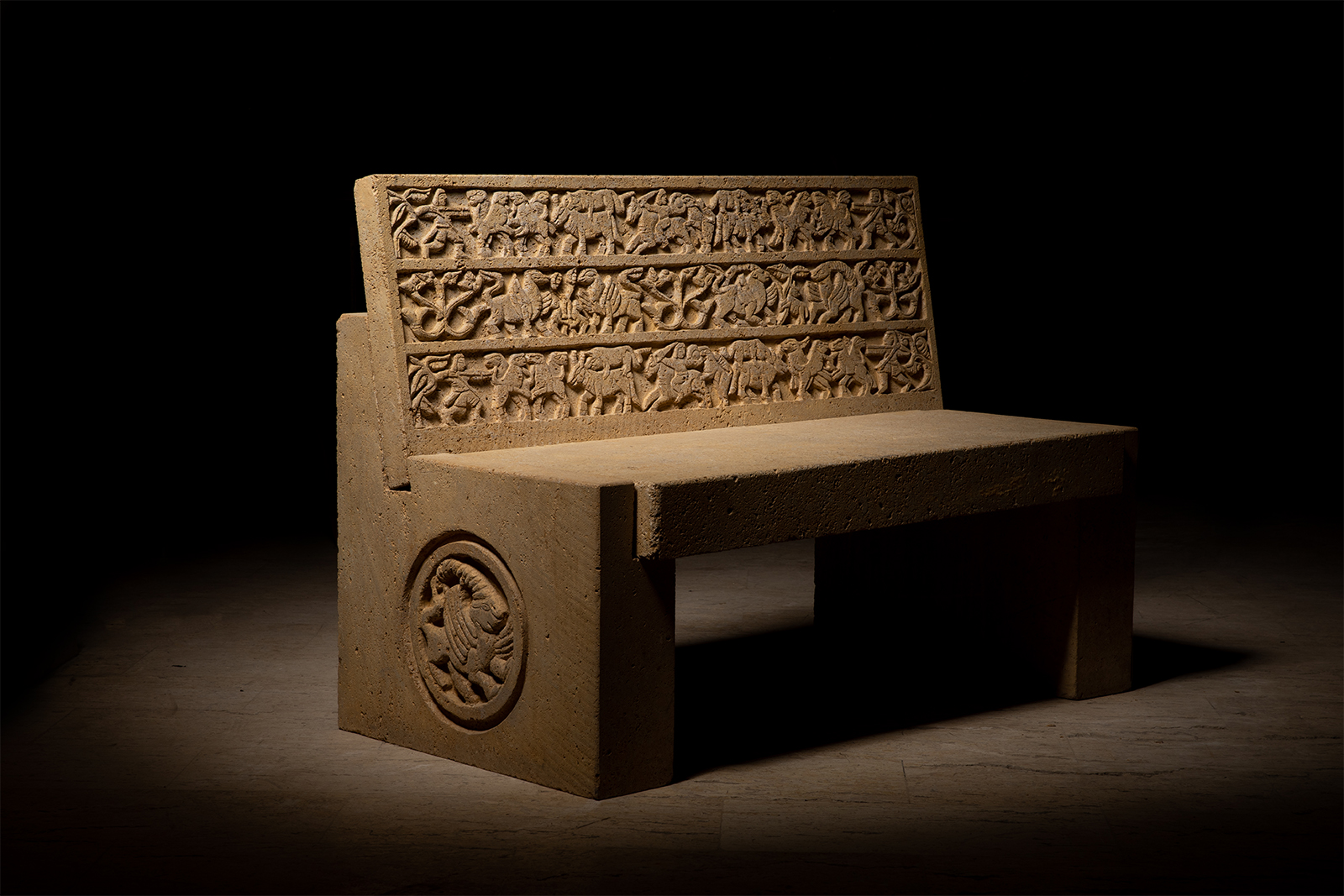
Bench
125 x 60 cm
This outdoor bench made of Hashemite stone is inspired by a Coptic-style ivory box that tells the story of a hero fighting enemies, with an engraving of a mythical winged animal on the side in the same Coptic style. Hashemite stone is distinguished by its unique yellow colour, hardness and resistance to external weather factors.

Panel
80 x 80 cm
The first of its kind in Egypt, this project is inspired by the feather of Al-Ghamri’s pulpit located in the Al-Ashraf Barsbay Khanqa in the Desert of the Mamluks in Cairo.
Made of mahogany wood inlaid with ebony and brass work, it uses the zincograph technique.
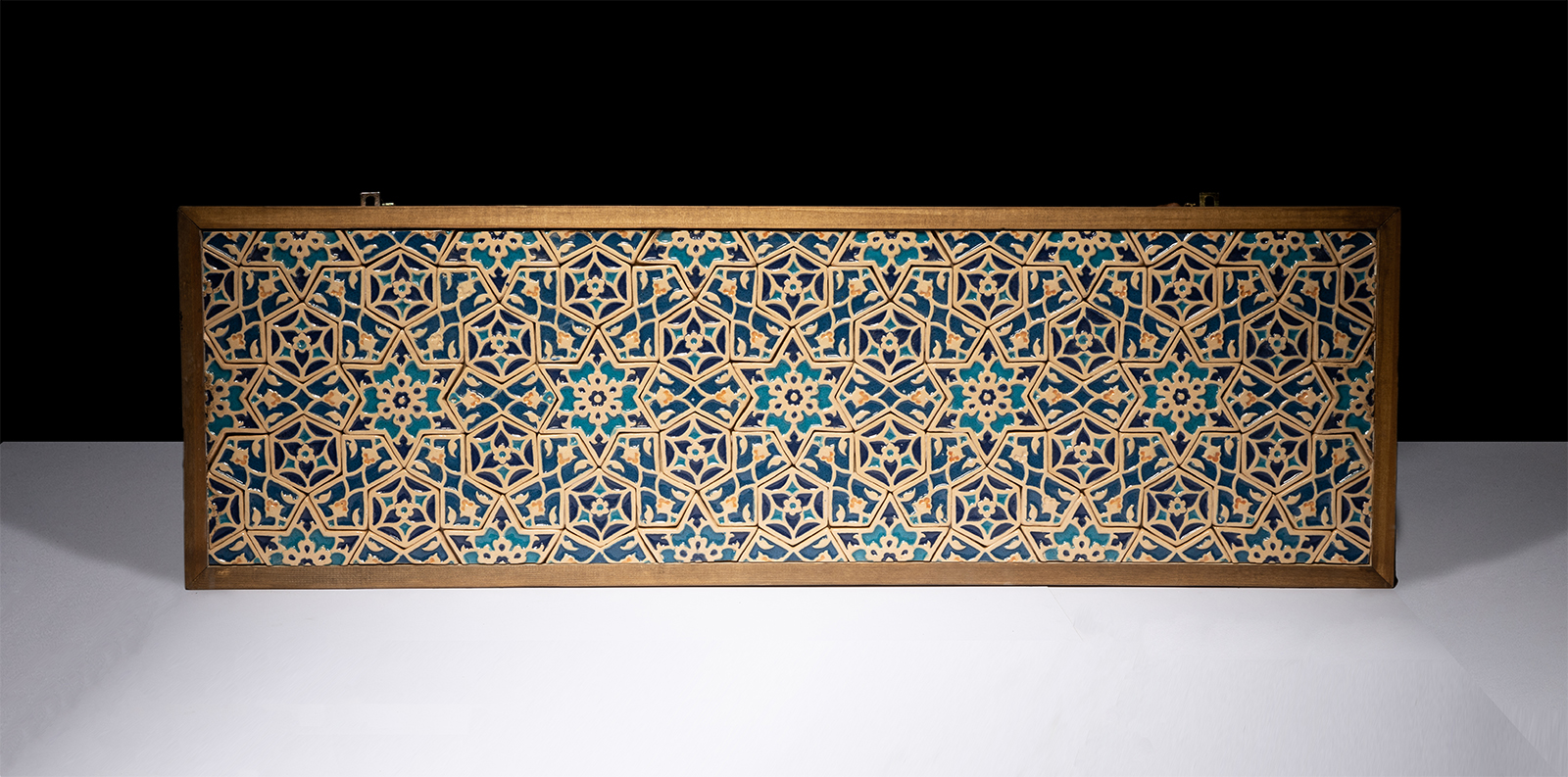
Panel
120 x 35 cm
Inspired by the tiles found on a 17th-century balcony entryway at the Shrine of Fatima Al-Masumeh in Qom, Iran, this design utilises a network of hexagonal geometric shapes, known as tasomah, intertwined with botanical decorations.

Panel
110 x 58 cm
Inspired by the Gayer Anderson Museum fountain floor, this panel uses a hexagonal grid and repetitive triangles to form the dodecagon shape. The triangle unit was carved on gypsum to create the tile mould.



Bench
119 x 65 cm
Inspired by ancient Quranic benches, this bench features wood inlay using camel bones as geometric decorations inspired by the Wikala of Sultan Qaytbay. Woodturning was used to build the frame, and the lower portion is intended as a storage unit.

Panel
90 x 60 cm
A ceramic panel inspired by Al-Aqsa Mosque and made using the cuerda seca technique.

Frame
This wooden frame for a door is inspired by a wall mural found in the Topkapı Palace in Istanbul. The concept is rooted in the Bauhinia tree, particularly inspired by the vibrancy of its leaves and blossoms.

Panel
128 x 44 cm
A ceramic panel of tiles engraved with motifs from the Ibn Tulun Mosque. The tiles were painted using a transparent glaze mixed with manganese to give a stone feel.

Panel
100 x 60 cm
Inspired by the Taj Mahal, this panel incorporates various styles and design techniques, such as arch shapes, marble works and stone carvings, to achieve a Mughal look.

Plate
35 cm
Inspired by an elegant 16th century plate based on two geometric networks, the design uses the same quadrilateral and pentagonal formations and is decorated using brush painting.

Lighting unit
28 cm front circle / 68 cm rear circle
This hand-engraved brass lighting unit is inspired by the two Mamluk-era sconces exhibited at the Metropolitan Museum of Art.
The large platter is part of a set of trays upon which, traditionally, candlesticks were fixed to reflect candlelight, illuminating a room while highlighting the decorative details of the brass surface.
The project follows octagonal shape proportions, relying on a circular network of 21 solar motifs, featuring musicians, dancers and animals.

Mirror
63 x 63 cm
This hand-carved wooden mirror frame is a depiction of a hunting and harvesting scene. It contains oud players, hunters with their horses, various birds and bunches of grapes. The piece is inspired by a mirror from the Fatimid era exhibited at the Pergamon Museum in Berlin.
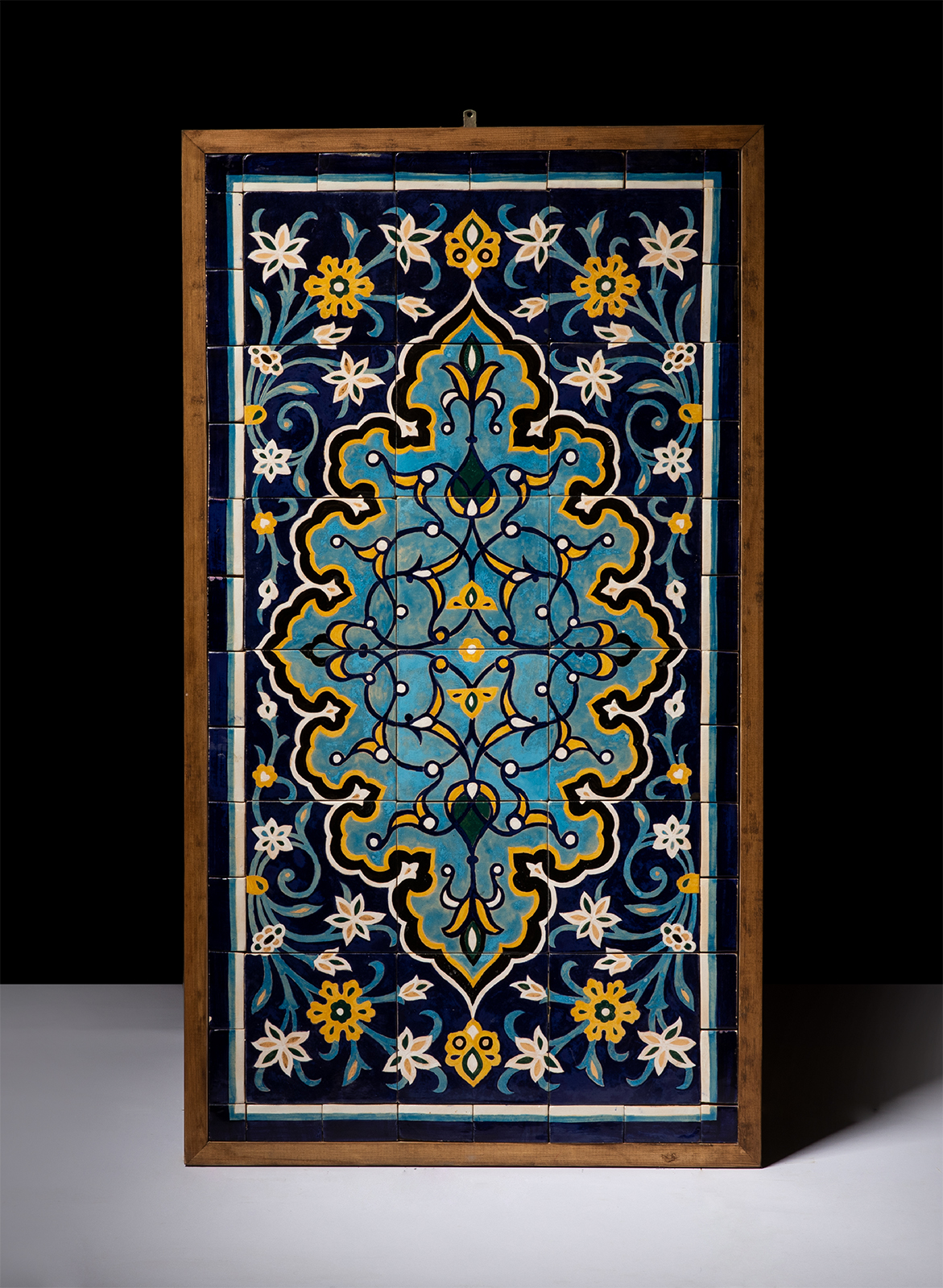
Panel
90 x 45 cm
This ceramic panel uses pigments and oxides similar to those used to decorate the Shah-i-Zinda Mausoleum in Samarkand, Uzbekistan. Blue and turquoise have been combined with yellow ochre, green and black to achieve a unique floral motif.

Vase
Inspired by 13th-century Ayyubid-era crafts, this round, plump body holds a slender neck and is decorated with black dye under a turquoise glaze. Traditionally, this type of vase was used to store and transport spices, food ingredients and medical materials.
